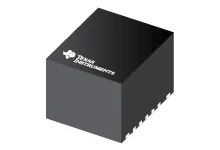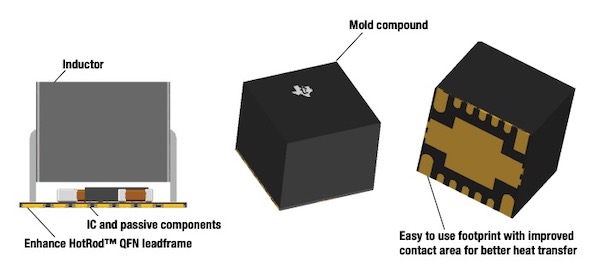Power density is closely related to both size and efficiency. The more an engineer knows about power density, how it is estimated, its limitations, and how those limitations can be overcome, the better prepared he or she will be to leverage the latest in power-dense technology to meet the intense demands of modern power management systems.
Why Power Density is Important
In the context of power management, power density serves as a measure of how much power can be processed in a given space or area. However, there is more to it than. Power density allows more power to be processed in a smaller space while enhancing the functionality of a system at reduced, not increased, system costs. In addition, power density and efficiency are closely coupled in power-delivery applications, and efficiency remains a driving force in modern engineering. In fact, to some, achieving higher power densities has become the ultimate achievement when designing power systems.
The details of calculating power density correctly can be fairly detailed, but the basic concept behind estimating power density is quite straightforward. Most power density measurements are based on either volume or area. For volume, power density would be the output power processed (Vo x Io) divided by the area formed by the rectangular area of the board (W) multiplied by the height of the tallest component on that board (x H). Power density in terms of area would simply be the power processed (Vo x Io) by the rectangular area of the board (L x W). Power density is quantified as the amount of power processed per unit volume or unit area. The most typical units are Watts per cubic meter (W/m3), Watts per cubic inch (W/in3), Watts per square meter (W/m2), or Watts per square inch (W/in2).
Limitations and Trade-Offs in Power Dense Solutions
There are limitations and trade-offs involved in high power density solutions. In order to understand how progress can be made in achieving ever higher power densities, it is vital to be aware of these issues. Very specific limiting factors exist for how much power density can realistically be improved, including some of the following list:
- Conduction losses
- Turn-on and turn-off losses
- Reverse-recovery losses
- Charge related losses
- Thermal issues
With the exception of thermal issues, these factors are related to converter power losses.
Keys to Achieving High Power Density
With a general idea of what limits power density, a designer’s focus can shift to how high power density can be accomplished in spite of those limitations. Modern power management solutions that achieve high power density have these fundamental aspects in common:
- A switching element that achieves low conduction losses and low switching losses
- An optimized converter topology that operates at high switching frequencies combined with an appropriate control method
- More passive integration of power and control methods, often accomplished monolithically or through multichip module technology that integrates multiple semiconductor dies, thus reducing the footprint
- Excellent thermal performance that minimizes the temperature gradient between the silicon temperature and outside cooling surfaces
Examples of TI’s High Power Density Innovations
TI has developed key technologies and innovations that implement the key design aspects that can overcome the limitations of higher power density. These technologies have the following four characteristics:
- Less heat is generated because of excellent device switching performance made possible by advanced silicon and gallium-nitride technologies
- Increased efficiency is achieved by using smaller passive components, multilevel converter topologies, and advanced power-stage gate drivers
- The system footprint is reduced by saving board space, simplifying board layout, and achieving low parasitics -- all made possible by using advanced multichip module technologies
- Thermal performance is improved by removing heat from the package with advanced cooling technologies such as Enhanced HotRod™ QFN packaging, power wafer chip-scale packaging, and top-side cooling
For example, the TI TPSM53604 is a 36-V, 4-A step-down power module with a volume of only 5.5 x 5 x 4-mm.

Figure 1. The TPSM53604.
With this device, engineers can cut the size of their power-supply design by 30% and reduce power loss by 50% in rugged industrial applications. This integrated inductor power module has an Enhanced HotRod™ QFN (quad flat no-lead packages) with a simple footprint.
The Enhanced HotRod™ QFN provides several key benefits, but its enhanced thermal dissipation capabilities are of the most interest in the context of power density.

Figure 2. Power module example in the Enhanced HotRod QFN package
By combining a standard QFN package with a thermal DAP (die attach pads), the TPSM53604 buck module is able to overcome power density limits related to thermal performance, with up to 20 W output power at 85°C with no airflow. It is also the industry’s smallest 36-V, 4-A module, an accomplishment made possible by using the Enhanced HotRod QFN™ to more effectively dissipate heat.
Another example of TI’s innovative approach to overcoming limitations related to power density would be the TI UCC12050, an isolated DC/DC bias supply that integrates a transformer and DC/DC controller with TI’s proprietary architecture to provide 500 mW (typical) of isolated power with high efficiency and low EMI. This is a miniaturized solution with a low profile offered in a wide-body SOIC package with a height of 2.65-mm.

Figure 3. The UCC12050.
The UCC12050 enables engineers to shrink their power solutions up to 80% and maximize efficiency in industrial applications requiring isolation.
The Increasing Importance of Power Density
From on-board electric vehicle battery chargers to power supplies for IoT (Internet of Things) technology in a home, power density is key. And because power density is closely tied to efficiency and size, its importance continues to increase. There are limitations to achieving high power density, but TI has successfully developed innovative approaches and technology to overcome those limitations.
